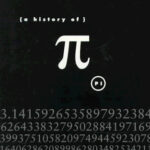Support our educational content for free when you purchase through links on our site. Learn more
[2023] Dive into Pi: The First 200 Digits Revealed

Imagine a magical number that has captivated the minds of mathematicians and intrigued people for centuries. Well, let us spill the beans – it's none other than Pi (π)! In this article, we're going to dive into the enchanting world of Pi, revealing the first 200 digits and much more. Brace yourselves for a journey into the depths of this mysterious mathematical constant!
Table of Contents
- Introduction
- What is Pi?
- The Importance of Pi
- Unraveling Pi: The First 200 Digits
- Quick Tips and Facts about Pi
- FAQ
- What is the first 1000000 digits of Pi?
- What are the first 300 digits of Pi?
- What is Pi to 1000 decimal places?
- Useful Links
- Reference Links
Introduction
Before we dive into the captivating world of Pi, let's take a moment to understand what it actually is. Pi is an irrational number with an infinite number of decimal places, often approximated as 3.14159. Although Pi might seem like an enigma, it is simply the ratio of a circle's circumference to its diameter. But what makes Pi so fascinating is its infinite, random nature.
What is Pi?
Pi is a mathematical constant that represents the relationship between a circle's circumference and its diameter. It is denoted by the Greek letter π (pi). The value of Pi is approximately 3.14159, but it continues infinitely without any repeating patterns. In simple terms, if you take a circle and measure its circumference and diameter, the ratio of these two measurements will always be Pi, regardless of the circle's size.
The Importance of Pi
Pi is ubiquitous in the field of mathematics and has numerous applications in various scientific disciplines. Here are a few reasons why Pi holds such significance:
-
Geometry: Pi is crucial for calculating the circumference, area, volume, and surface area of circles, spheres, and cylinders. It is also used in trigonometry to relate angles and circles.
-
Physics: Pi appears in fundamental equations, such as the Heisenberg uncertainty principle and Einstein's field equations in general relativity.
-
Engineering: Pi is essential for designing and analyzing structures involving circles, such as bridges and wheels.
-
Statistics: Pi plays a role in probability calculations, random number generation, and statistical analysis.
-
Technology: Algorithms and formulas involving Pi are used in computer graphics, digital signal processing, and cryptography.
Unraveling Pi: The First 200 Digits
Are you ready to explore the first 200 digits of Pi? Brace yourself for a series of seemingly random numbers, each one a piece of the infinite puzzle:
3.1415926535897932384626433832795028841971693993751058209749445923078164062862089986280348253421170679…
Now that's a long string of numbers! These digits of Pi have been calculated using advanced computational methods. As mentioned earlier, the decimals continue indefinitely without any repeating patterns, making Pi a truly fascinating constant.
Quick Tips and Facts about Pi
Here are some quick tips and fascinating facts about Pi to enhance your understanding:
-
The search for the digits of Pi has captivated mathematicians for centuries. The pursuit of calculating Pi accurately led to the development of computers and algorithms.
-
Despite its random nature, the first 39 digits of Pi contain all the numbers from 0 to 9. This property is known as normality.
-
Pi has been calculated to millions of decimal places using supercomputers and algorithms. Some enthusiasts even compete in Pi digit memorization contests.
-
In popular culture, Pi Day is celebrated on March 14th (3/14) because the American date format 3/14 resembles the first three digits of Pi.
FAQ
Q: What is the first 1000000 digits of Pi?
A: The first million digits of Pi are too vast to include in this article. However, there are dedicated websites and resources that provide the complete sequence for those with a keen interest. Exploring the first million digits can be an awe-inspiring experience!
Q: What are the first 300 digits of Pi?
A: The first 300 digits of Pi are as follows:
3.1415926535897932384626433832795028841971693993751058209749445923078164062862089986280348253421170679…
Q: What is Pi to 1000 decimal places?
A: Pi to 1,000 decimal places starts with the same sequence as the first 200 digits. The additional decimal places continue the same pattern of non-repeating digits.
Useful Links
Dive deeper into the world of Pi and explore related products and resources:
-
Why Pi™: Visit our website dedicated to all things Pi, where you'll find engaging articles, educational resources, and much more.
-
Pi Mugs on Amazon: Sip your morning coffee in style with these fantastic Pi-themed mugs.
-
The Joy of Pi by David Blatner: Delve into the fascinating history and significance of Pi with this captivating book.
-
Pi Jewelry on Etsy: Flaunt your love for Pi with beautiful and unique jewelry pieces from talented artisans.
Reference Links
-
The Joy of Pi (Source: joyofpi.com)
So there you have it, a fascinating glimpse into the world of Pi, revealing the first 200 digits and exploring its significance across various fields. Whether you're a math enthusiast or simply intrigued by the mysteries of the universe, Pi is sure to captivate your mind. Embrace the infinite wonder of Pi and let it inspire your curiosity!




